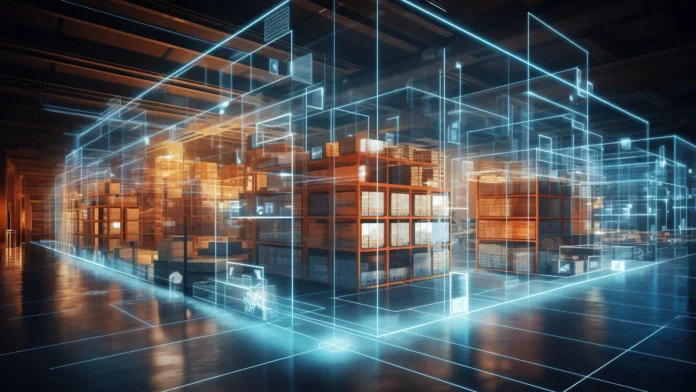As industries worldwide become increasingly reliant on digital solutions, the logistics real estate sector is undergoing a profound transformation. With a focus on automation, smart infrastructure, and sustainable solutions, technology is at the forefront of driving change in the design and management of logistics facilities. The demand for faster, more efficient supply chains is reshaping the landscape, creating the need for innovative building designs capable of accommodating these emerging trends.
Automation and robotics in warehousing
One of the most significant transformations in logistics real estate design is driven by automation. Industry giants like Amazon, Walmart, and Alibaba have scaled their operations through the integration of advanced automated systems, prompting the development of “smart warehouses.” These facilities are designed with robotics in mind, allowing for increased efficiency, reduced costs, and faster order fulfillment.
Automated Guided Vehicles (AGVs), robotic arms, and autonomous forklifts are revolutionizing the logistics industry. These systems streamline operations like picking, packing, and shipping, reducing human error and improving productivity. In response, warehouse designs have shifted towards larger, open spaces with flexible layouts that accommodate both human workers and machines. Wider aisles and taller racks allow for easier navigation and increased storage capacity.
Additionally, high-bay structures are becoming the norm, supporting vertical automation that maximizes space utilization. Vertical storage allows companies to store more inventory without expanding the warehouse’s physical footprint, a key advantage in densely populated or urban areas where space is at a premium.
The rise of Smart Infrastructure and IoT integration
The integration of smart infrastructure, particularly through the Internet of Things (IoT), is another key factor influencing logistics real estate design. IoT-enabled devices, such as smart sensors and connected systems, provide real-time data on various aspects of warehouse operations, from inventory levels to environmental conditions. This data-driven approach allows for better decision-making, improving efficiency and operational control.
For example, in cold storage facilities, IoT sensors monitor temperature and humidity levels, ensuring optimal conditions for perishable goods. These systems help reduce energy consumption, prevent spoilage, and maintain product quality. Similarly, IoT-enabled equipment tracking and predictive maintenance systems reduce downtime, enhancing the overall efficiency of the facility.
To support this technological integration, warehouses must be designed with advanced data infrastructure, energy-efficient lighting, and sensor networks. Additionally, smart buildings can dynamically adjust energy consumption based on operational demand, leading to cost savings and improved sustainability.
AI and Predictive Analytics in facility design and operations
Artificial intelligence (AI) is playing an increasingly important role in the design and operation of logistics facilities. AI-powered systems are capable of forecasting demand, identifying operational bottlenecks, and optimizing warehouse layouts. This allows logistics companies to enhance space utilization, minimize inefficiencies, and boost throughput.
Before a facility is even built, AI-driven simulation software can predict the most effective layout for maximizing efficiency. By testing different configurations virtually, developers can avoid costly design mistakes and reduce construction timelines. This approach ensures that new logistics facilities are designed with flexibility in mind, allowing them to adapt quickly to changes in demand or operational needs.
AI is also transforming last-mile logistics, which has a significant impact on the design of urban logistics centers. As cities become more congested and e-commerce demand grows, the need for strategically placed micro-fulfillment centers closer to consumers is rising. AI helps optimize these locations and building designs, ensuring faster, more efficient deliveries in urban environments.
Sustainability and Green Building initiatives
Sustainability is a growing priority across industries, and logistics real estate is no exception. Developers are increasingly integrating green technologies and sustainable design features into warehouses and distribution centers to reduce their environmental impact. Solar panels, energy-efficient HVAC systems, and rainwater harvesting systems are just a few examples of eco-friendly innovations that are being incorporated into new facility designs.
The demand for net-zero energy buildings is also rising. These facilities are designed to generate as much energy as they consume, often through renewable sources such as solar or wind power. Warehouse roofs are frequently optimized for large-scale solar panel installations, and advanced insulation materials are used to reduce heating and cooling costs.
In addition to building design, sustainability trends are influencing site selection. Companies are choosing locations that minimize transportation distances, reducing carbon emissions from delivery vehicles. Proximity to renewable energy sources is another consideration, as companies seek to power their operations with clean energy.
3D Printing and On-Demand manufacturing
3D printing, or additive manufacturing, is emerging as another technology poised to disrupt logistics real estate design. On-demand manufacturing enables companies to produce goods closer to consumers, reducing the need for large inventories and long supply chains. As a result, the traditional model of large, centralized production facilities may give way to smaller, decentralized micro-factories.
Warehouses equipped with 3D printers can manufacture products on-site, streamlining operations and reducing lead times. This shift will likely lead to the development of flexible, multi-purpose logistics facilities that support both production and distribution under one roof. These buildings will need to be designed with adaptable spaces to accommodate a variety of manufacturing technologies.
The Future of Logistics Real Estate Design
The logistics real estate sector is undergoing a period of rapid evolution, driven by advancements in technology. From automation and AI to smart infrastructure and sustainability, these innovations are reshaping the way logistics facilities are designed and operated. As the demand for faster, more efficient, and environmentally friendly supply chains grows, the future of logistics real estate will continue to be shaped by cutting-edge technologies.

